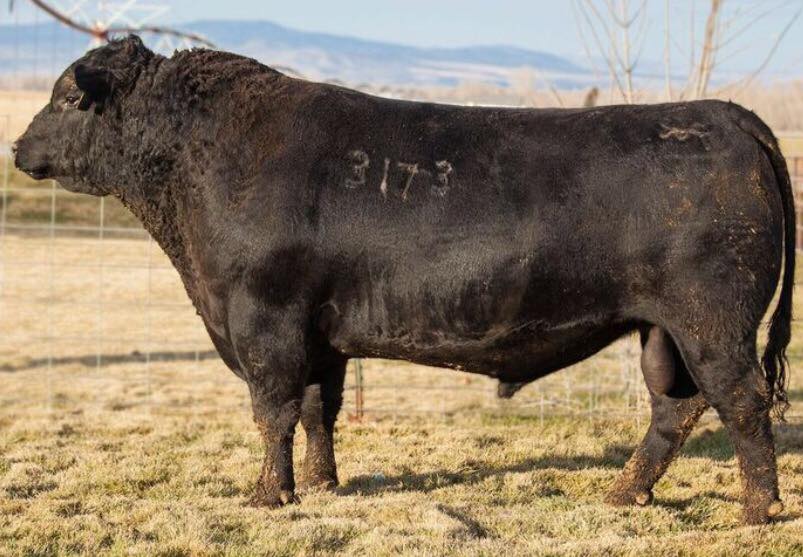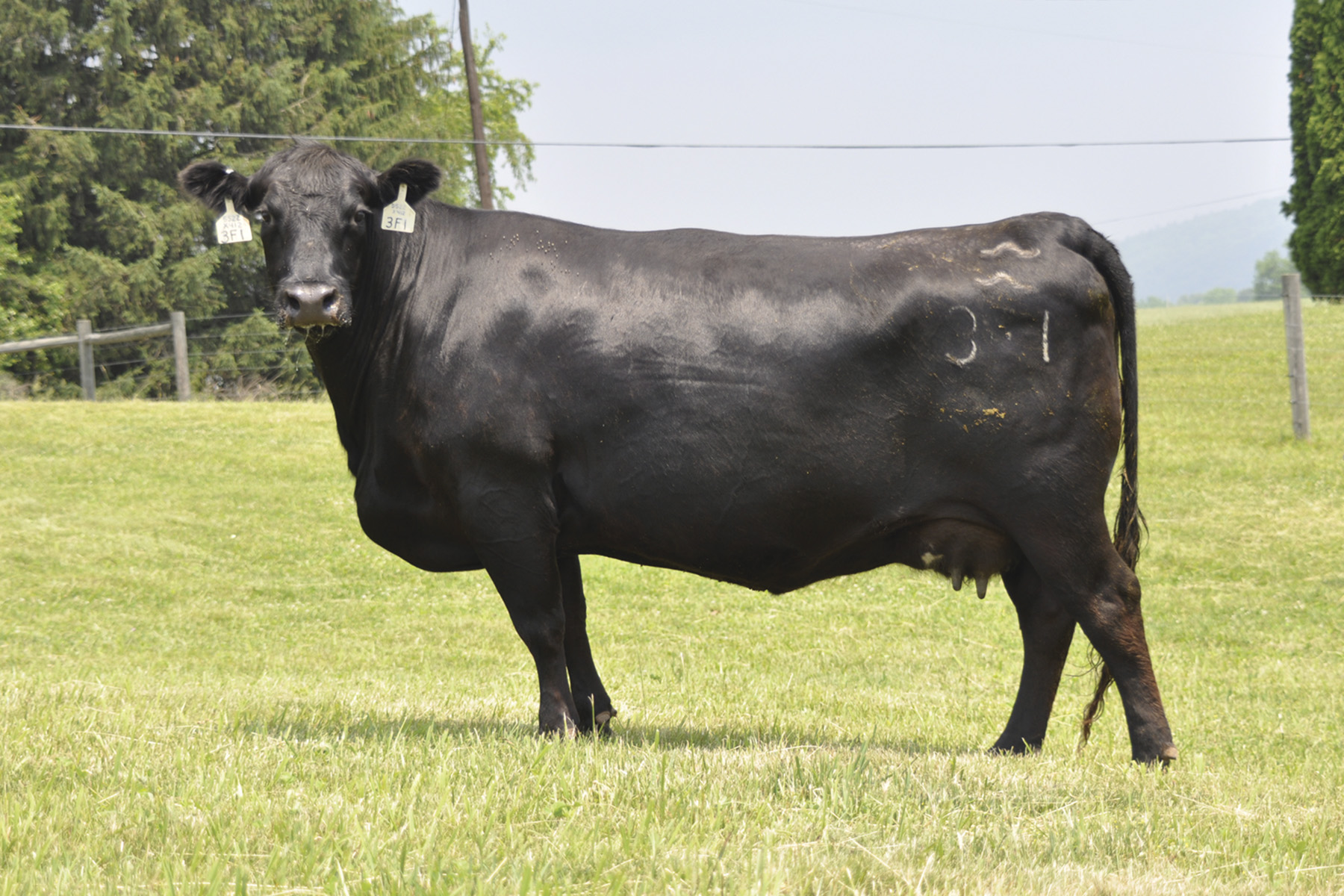OUR THINKING
We’d like to share some of our thinking.
To evaluate the genetic value of Spring Valley Ranch’s seedstock and herd, and to help its customers evaluate Spring Valley’s cattle, Spring Valley Ranch uses, in addition to data from the American Angus Association, analytics from Neogen – the Igenity Beef Profile. The Igenity Beef Profile is a genomic analysis of a specific range of traits valuable to the beef cattle industry, especially the cow-calf producer. The Igenity Beef Profile has been used to evaluate these heifers.
Neogen uses a simple 1-10 scoring system for each trait. In most instances, the higher the score, the more genetic potential exists for that animal compared to an animal with a lower score. However, there are certain instances where a lower score is preferred, such as Birth Weight.
Neogen uses various Indexes to identify animals that are the best combinations of the multiple traits that are most important for each producer and its breeding objectives. The traits may be combined for the most useful genomic analysis.
Here, Spring Valley Ranch has provided three Indexes to assist its customers and evaluate its herd. Spring Valley uses these Indexes because of its customers’ needs and published concerns about today’s cattle. Spring Valley wants to address these concerns and help its customers.
Here are the Indexes:
Igenity Production Index. This is a standard Index utilized by many Igenity Beef customers. It helps identify cattle that excel in a combination of Cow Stayability, Carcass Merit, and Feedlot Performance. Producers that retain ownership of calves and keep replacement heifers can use this Index.
SVR-Production Index. Spring Valley Ranch created this customized Index to measure the traits of Stayability, Heifer Pregnancy, Calving Ease Direct, Average Daily Gain, Marbling and Tenderness. Customers interested in building a better cow herd while creating superior taste products and eating qualities for the consumer can use this Index.
Igenity Terminal Index. This is a standard Neogen Index used to identify cattle geared toward terminal production and grid carcass merit. This Index is used for terminal seedstock but is also used frequently when evaluating feeder cattle destined for the grid. Although useful, the Terminal Index may be less relevant for the producer looking to improve a cow herd.
We know these bred heifers meet the needs of today’s producer and pass on the functional traits of Foundation Angus because we measure our cattle through rigorous evaluations using Bonsma techniques, an ongoing Structured Sire Evaluation, sale results and customer comments.
Bonsma Evaluation. To measure the functional Foundation traits demanded by today’s producers, we use the methods of two of the greatest cattle scientists, Professor Jan Bonsma and his student, Johann Zietsman. Our friend and Foundation Angus enthusiast Sam Wylie explained Bonsma principles by using an empty Styrofoam coffee cup to describe the ideal shapes of an old granny cow and an outstanding, fertile bull.
If you hold the cup horizontally, you’ll see that it is a wedge. A cow’s hindquarters should be wider like the open end of the cup and its front end should be narrower like the cup’s bottom. A bull should be the opposite. His front end should be smooth yet wide like the mouth of the cup. He should wedge towards his tail, while having good muscling. The shoulder blades should rotate above their topline, with a slight drop from hooks to pins to ease calving, and a broad muzzle to aide in grazing. Bonsma also teaches that fewer inputs will produce the most fertile cattle. These basic tools have brought reproductive efficiency, predictability and uniformity – functional traits — to our cowherd, bulls, and calves.
Dam’s Teat/Udder. A score of 50 is perfect for size of the teat and the tightness of an udder. Because of the importance of this measure, we tend to be more rigorous in our scoring.
Many of our cows score 45 (teat)/45 (udder). They have teats the size of a “pinky” finger and have udders with a good, tight attachment, not pendulous hanging bags. A score of 30/30 represents a teat slightly larger than a thumb and a bag that is fuller with a looser attachment causing the bag to be closer to the cow’s hock.
Dam’s Calving Ease. Our cows must calve unassisted and in the pasture. By doing this, we can eliminate most calving difficulties. We believe that if a cow calves on its own, its mothering ability will be strengthened.
Dam’s Calving Disposition. We use five different scores to measure a cow’s calving disposition: “1” is not touching a sorting stick; “2” is one bump on the nose to remind her of our bubble; “3” is a hard tap; “4” is a continual reminder of our bubble or someone has to block the cow so the calf can be handled; a “5” will be taken to town and her offspring not offered for sale as registered cattle.
Dam’s Body Condition Score (“BCS”). We track BCS at calving in range conditions. We want our cows to calve at a BCS of 4.5 to 6, because we have better pregnancy rates in this range. We also want a cow that gives to her calf.
Dam’s Mothering Ability. Once again, we use a scoring system: “1” is a cow that stays right beside you and does not bother you while you process the calf and then, when her calf is returned, she takes her calf and moves right along; “3” is a cow that runs off 20 yards and watches, but returns to pick up her calf and leaves without bothering you; “5” is a cow that runs off and needs to be paired back up. If a cow is a consistent “5” or causes trouble, she is taken to town, regardless of pedigree.
Foot Score. The environment sorts our cattle through their feet. Our foot scores fall between 6 to 7 for angle and 5 to 6 for claw set, which are ideal for our range environment. We disagree slightly with the Association’s ideal range, as we believe the Association’s range is a bit too long in the toe and the angle is too sharp.
Forage Test Ratio. We ratioed all the Sale Bulls for gain on grass and forage from Weaning until the end of summer pasture (October 15), since grass and forage are the only feed stuff they should receive while working for our customers. We believe any other ratio is largely irrelevant for the cow-calf producer. Our cattle take what Mother Nature provides. Sometimes she’s very good. Other times, she’s not very helpful. Because we don’t adjust for Mother Nature through feed, our cattle do well for our customers.
The Herd. Our cows must maintain excellent fertility and be long-lived, as shown in the footnotes. They must be phenotypically correct, feminine, angular and Bonsma style, so they calve easily and cover large amounts of country during the summer. They must properly feed their calves. We cull females that have poor dispositions, poor legs and feet, inferior teat and udder structure and low-quality milk. We continue to strive for a mother cow that can wean a calf weighing at least 50% of her body weight.
The Calves. At birth, each calf is tagged, weighed and handled on foot. The mother cannot be overly defensive, and it cannot run away. The calf must get up and quickly suck on its own. The cow needs to pair up and take her calf when pairing out. We also take certain critical measurements. If the mother and the calf do not meet these criteria, they are culled.
Final Selection of the Herd. There are two final steps in the selection process. All our animals must be easy to handle. We will not tolerate animals that are difficult to handle, regardless of any other characteristics.
Mother Nature makes the final cut. If an animal can’t make it on our native grass, supplemented with salt, mineral and apple cider vinegar, then Mother Nature culls the animal from our herd.
Spring Valley:
- Has developed a cowherd that transmits the best of the maternal Angus traits that are the foundation of the breed;
- Breeds uniformly functional cattle that are profitable;
- Focuses upon functional traits such as cow survival (longevity), reproductive regularity, docility, mothering ability, excellent feet and legs, proper teat and udder structure, good heifer pregnancy rates; calving ease and feed efficiency; and
- Stresses maternal traits, not terminal indices.
It is our judgment that over the last fifteen years, the industry has ignored traditional maternal Angus cattle, the needs of the commercial cow-calf producer and environmental issues posed by the range environment. To justify its approach, the industry uses the terminal EPD index — $B – as its primary measure.
We strongly believe the terminal EPD index of $B does not provide an effective guide for the cow-calf producer. It does not measure reproductive ability, mothering qualities, teat and udder structure, longevity and the ability to succeed on the range.
Instead, we are developing our own profitability measures that include uniformity, cow survival (“longevity”), docility, mothering ability, heifer pregnancy, calving ease, structure (including feet and legs), reproductive efficient, teat and udder structure, carcass quality and REA as a percentage of CWT.
These measures follow the results of a survey taken by the American Angus Association in 2018 that can be found in our catalogs.
We are also concerned that the present EPD system does not account for differences in the environments in which cattle are raised.
Thus, we are developing a “pod” of reference cattle derived from “modern, mainstream” genetics that can be used as a baseline of comparison to our cattle.
We’re glad we have followed this process, because we believe the data flowing from the EPD change on July 7, 2017 tends to prove that the present EPD system using terminal indices may very well be inherently unreliable. We also think the present system is not well-suited for the cow-calf producer. Check out our 2018 and 2020 catalogs for a discussion of this change.
Our older, foundation, maternal genetics produce cattle that thrive and are efficient in our range environment.
Our commercial and registered cattle flesh easily, and have high carcass quality in forage-fed, grass-finished, or traditional feedlot programs.
These are Timeless Genetics for Today’s Profitable Producer!







